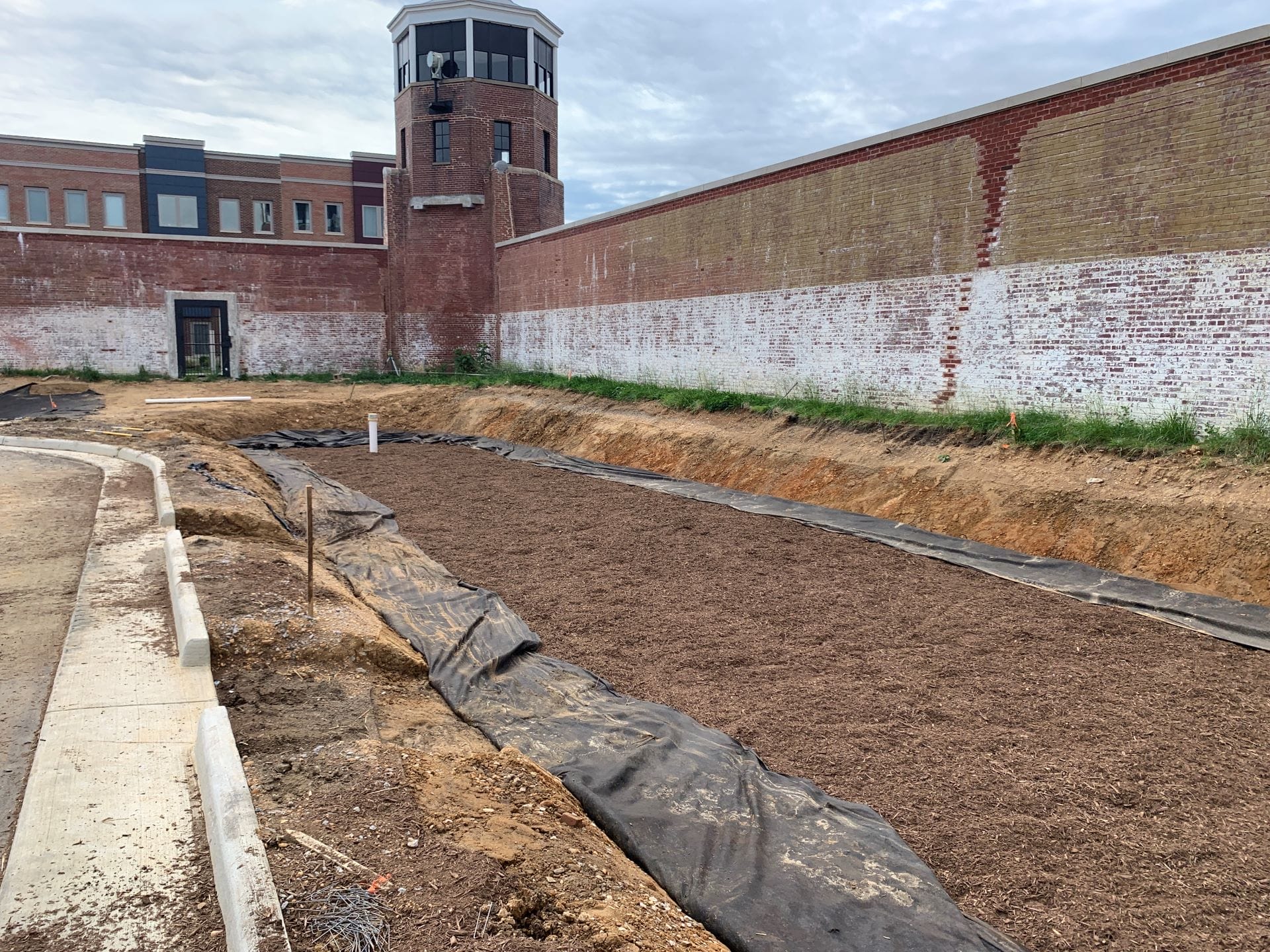Winter can be extremely taxing on stormwater facilities for a number of different reasons. For one thing, the winter months often see these systems being neglected, which can end up causing damage in addition to the accumulation of debris, sediment, and trash that should not be allowed to gather unattended for long periods of time.
Another problem is that during winter, salt, and sand are often utilized on impervious surfaces such as driveways, roads, and sidewalks to help the ice melt more quickly and assist with traction, but when the snow melts or there is rainfall, the salt and sand will then end up heading to a stormwater facility.
Salt and sand can both cause problems. Salt causes an increase in saline levels in the water which can be a threat to almost all types of aquatic life, and sand can also transport metals and oils. The accumulation of sand can also result in blockages in systems and cause them to malfunction. Finally, because of naturally changing temperatures, stormwater structures that are near ground level can experience displacement or damage.
The good news is that there are tips to help you maintain stormwater or green infrastructure facilities and improve the function of these facilities if you gain an awareness of the issues they can face with the arrival of spring.
6 Tips to Maintain Stormwater Maintenance or Green Infrastructure Facilities in the Spring
1. Perform an Inspection
One important tip for maintaining stormwater or green infrastructure facilities in preparation for spring is to perform a thorough inspection of all forebays and inlets for sediment and debris accumulation. During winter, these areas often experience an increase in the amount of sediment, debris, and other pollutants captured. If any sediment or debris is found to have accumulated, then it will need to be removed and disposed of elsewhere.
2. Check for Clogging
Another good tip is to check the outfall device for any clogging. Weirs and low-flow orifices can become blocked by debris, mud, sticks, and trash. Outfall devices are of vital importance to the performance of basins and need to be cleaned at least once every month.
3. Check for Blockages and Water
It is important to check storm pipes and storm drains for standing water and blockages. In the event that standing water is discovered, there could be bigger subsurface issues present that will have to be dealt with before wet weather events arrive.
4. Remove Dead Trees
It’s a good idea to take stock of trees near your stormwater or green infrastructure facilities. During winter months, some tree limbs can fall and get into facilities like bioswales, which can cause blockages and reduce their ability to hold and treat stormwater. If larger tree limbs fall, they can damage important parts of the infrastructure, which can cause serious problems. To prevent this from happening, it’s important to trim or remove dead trees and branches before they cause damage.
5. Aerate and Overseed Basin Slopes
The slopes of the basin should be aerated and overseeded. This can benefit a stormwater facility in much the same way as it does an average lawn. While it is often not advised to apply fertilizer in stormwater facilities, when the circumstances are appropriate, the correct application of them can actually have a very positive impact.
For example, aerating and overseeding a slope that finds it difficult to grow vegetation, followed by the application of a 10-10-10 fertilizer will definitely result in improved coverage. The improvement of coverage means that there will be less sediment coming down from the slope into the basin, thus helping with the longevity of the entire facility.
It is, however, a good idea to take a soil sample from basin areas that struggle to grow grass and have it tested (often free of charge) by your state agriculture resources in order to check the pH levels of your system’s soils. This information allows your approach to be adjusted when applying any soil amendments.
It is also of crucial importance to make certain that fertilizer is never applied to or ever comes into contact with stormwater. One of the major stormwater management goals is to remove rather than add nutrients to the water.
6. Create a Proper Maintenance Plan
Finally, another great tip is to create a proper maintenance plan that incorporates monthly checks during springtime. During the growing season, visits should be made to the stormwater facility at least once per month. There should, however, also be at least a few similar visits during the dormant winter months.
Stormwater maintenance is vital to ensuring the continued correct functioning of your stormwater and green infrastructure facilities.
Talk with Stormwater Maintenance and Green Infrastructure Experts in the DMV
Muller, Inc. is a leading stormwater maintenance and green infrastructure specialist in Maryland, Northern Virginia, and Washington, D.C., and provides all of your pre and post-construction stormwater needs.
If you are looking for a professional assessment of a stormwater or green infrastructure facility or assistance with any or all of the steps to maintain these facilities during spring, then call us at 703-560-4040 or contact us online.

